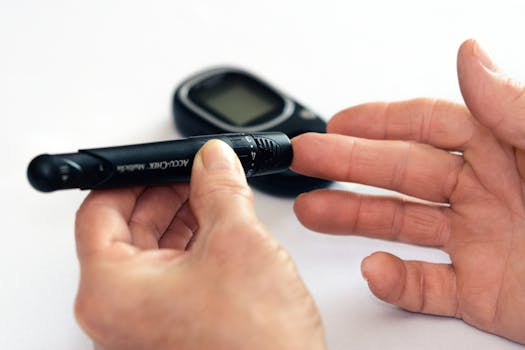Trying a 13 hour fast can be an approachable way to explore time-restricted eating without jumping into longer regimens. In this article we explain what to expect during a 13 hour fast, summarize potential benefits, and offer practical safety tips so you can try it responsibly. Whether your goal is better sleep, steady energy, or gradual weight management, understanding the timeline and common experiences helps you decide if a short overnight fast fits your routine.
13-hour fasting: an easy introduction to time-restricted eating
A 13 hour fast usually means finishing your last meal and then not eating again for the next 13 hours. For many people that looks like finishing dinner at 7:00 PM and waiting until 8:00 AM to eat the next morning. This modest fasting window aligns naturally with overnight sleep for many, and it can be simpler to adopt than more aggressive schedules like a 17 hour fast.
Common benefits reported with short overnight fasts
- Improved meal timing and reduced late-night snacking, which can help lower daily calorie intake without conscious restriction.
- Better sleep hygiene for some people: a shorter eating window in the evening may reduce indigestion and help the body wind down.
- Metabolic effects: time-restricted eating can help stabilize blood sugar and insulin rhythms for many, though individual responses vary.
- Behavioral simplicity: a 13 hour fast often feels sustainable because it usually overlaps with sleep, making it easier to maintain than longer fasts such as a 17 hour fast.
What a typical 13 hour fast timeline feels like
First 0–3 hours after your last meal: you’ll still be digesting. Appetites may feel normal if your meal was balanced and satisfying. Around 4–6 hours: blood sugar begins to stabilize and many people notice reduced hunger cues compared with earlier in the day. By 8–12 hours: the body shifts toward using stored energy and some people report clearer thinking and steady energy. After 13 hours: feeling of light hunger may return, but many find the appetite is manageable and the first post-fast meal tastes more satisfying.
How to make a 13 hour fast safe and effective
- Hydrate: drink water during the fasting window. Herbal tea or black coffee are usually okay for many people, but avoid added sugars and milk if your goal is a strict fast.
- Balance meals: include protein, fiber, and healthy fats at your last meal to keep you satiated through the overnight hours.
- Start gradually: if you currently eat late, move your last meal 15–30 minutes earlier each night until you reach 13 hours.
- Monitor how you feel: lightheadedness, dizziness, or persistent fatigue are signs to modify the approach or consult a healthcare provider.
- Avoid intense workouts in a fasted state if you’re new to fasting; schedule higher-intensity exercise during or after a meal until you understand your personal tolerance.
How a 13 hour fast compares with other fasting windows
A 13 hour fast is milder than popular patterns like 16:8 or 17 hour fast schedules. While longer fasts may produce stronger metabolic signals for some outcomes, they can also be harder to sustain. If you’re curious about longer fasting practices and safety for extended periods, see this overview on how to approach longer fasts: descriptive anchor text. Choose a window that fits your lifestyle and medical context—consistency matters more than extreme duration for many health goals.
Scientific perspectives on fasting vary and research is ongoing. For a general overview of time-restricted eating and intermittent fasting research, a useful summary can be found here: intermittent fasting overview.
Who should be cautious or avoid fasting
Fasting is not appropriate for everyone. People who are pregnant or breastfeeding, those with a history of eating disorders, individuals with certain chronic illnesses, and anyone on medications that require regular food intake should consult a clinician before starting any fasting plan. Older adults and people with poorly controlled diabetes should also seek medical guidance. If you experience persistent dizziness, palpitations, fainting, or severe mood changes, stop fasting and contact a healthcare professional.
- Takeaways:
- A 13 hour fast is a gentle, sleep-friendly form of time-restricted eating that many find sustainable.
- Benefits can include reduced late-night eating, improved meal timing, and steadier energy; individual responses vary.
- Start gradually, stay hydrated, balance meals, and consult a healthcare provider if you have medical conditions.
Is a 13 hour fast enough to see health benefits?
Yes, many people notice practical benefits such as reduced snacking and better sleep when they adopt a 13 hour fast. Metabolic improvements may be modest compared with longer fasts, but sustainability often leads to better long-term results.
How does a 13 hour fast differ from a 17 hour fast?
A 17 hour fast typically produces a longer window of fasting physiology and may accelerate some metabolic effects, but it can be harder to maintain. A 13 hour fast is easier for beginners and often fits sleep schedules, making consistency more achievable.
Can I drink coffee during a 13 hour fast?
Plain black coffee and unsweetened tea are generally acceptable during a fasting window for most people. Avoid adding sugar, cream, or milk if you want to preserve the fasting state. If you have caffeine sensitivity, consider limiting consumption late in the day to protect sleep.






